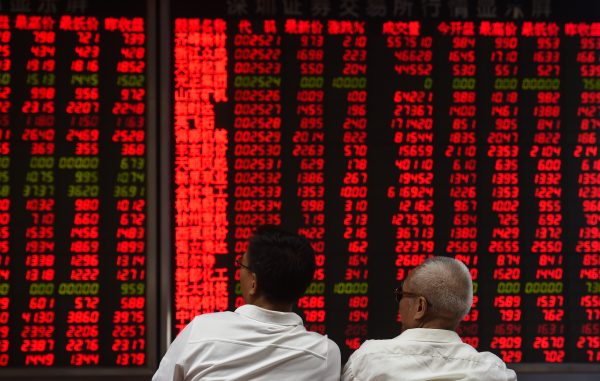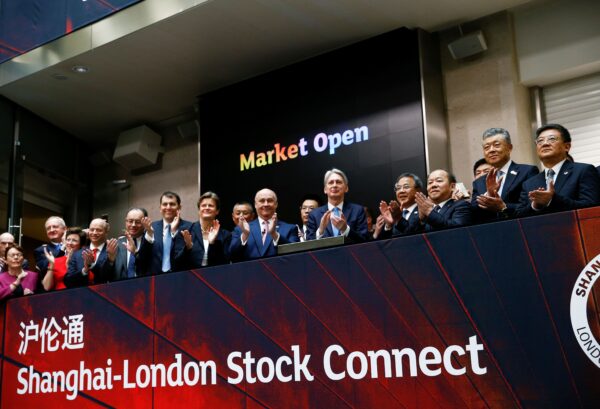China Quietly Raised $1.8 Billion on London Stock Exchange, More Planned
While the UK public was focused on Huaweis involvement in the countrys 5G project, the Chinese regim..
While the UK public was focused on Huaweis involvement in the countrys 5G project, the Chinese regime quietly raised close to $2 billion on the London Stock Exchange last month, through a special listing programme between London and Shanghai.
More listings are expected to take place in the coming months.
On June 17, the China Pacific Insurance (Group) Co. Ltd (CPIC) listed 514 million of its A-shares—shares traded in China—on the London Stock Exchange (LSE) in the form of global depository receipts (GDRs) through a scheme called Shanghai-London Stock Connect, raising $1.8 billion at a time when UK-China relations seem to be reaching a low point.
Like many other large companies in China, a significant portion of CPIC is held by various state-owned enterprises that are ultimately owned by the central or local governments of the Chinese regime. At the time of writing, over 45 percent of CPIC is ultimately owned by the Chinese State Council and the government of Shanghai.
CPIC was the second issuer to list via the Connect scheme, following Huatai Securities, who raised $1.7 billion last year. The government of Jiangsu Province is a significant shareholder of Huatai Securities.

More state-backed Chinese companies are getting ready to be listed in the UK. On June 11, the board of China Yangtze Power Co. Ltd gave its approval for the London GDR listing. Over 63 percent of the company is ultimately owned by the Chinese central government, with much of the remaining stake split between several local governments of Guizhou, Yunnan, and Shanghai.
The board of SDIC Power Holdings Co. Ltd approved UK GDR listing in July last year but decided later in December to delay the listing due to unfavourable market conditions. They are also expected to restart the process. The Chinese central government ultimately owns over 56 percent of SDIC Power.
Fast Access for China to Foreign Capital
Compared to floating original shares, the Connect scheme of GDR listing allows Chinese companies much easier access to international funding.
Under the scheme, eligible companies listed on one exchange are able to deposit their original shares with a local custodian bank, and list the “receipts” issued by the custodian on the other exchange. Those receipts can be traded as normal shares. With GDR listing, the Chinese companies skip some of the tough requirements under listing rules for equity shares, such as three-year revenue tracking.
In the case of CPIC, there seemed to be additional exceptions granted. On June 17, CPIC Chairman Kong Qingwei told CGTN, the overseas arm of a Chinese state-run media company, that the CPIC listing made history in several areas.
It was the first company ever to issue GDRs using Chinese accounting standards, as opposed to the EU International Financial Reporting Standards (IFRS) or other Generally Accepted Accounting Principles (GAAPs) typically required. It was also the first non-European company to have a minimum public shareholding waiver on the GDR. Both exceptions would make possible the listing of businesses tightly controlled by the Chinese regime.
Kong failed to mention another record-setting event. CPICs IPO application was approved in two days, the fastest turnaround the market has ever seen. CPIC submitted its application on June 10, and received the green light on June 12, at “lightning” speed, as described by Yicai, a financial news outlet in China.
Both the Financial Conduct Authority, which oversees the UK listing regime, and the London Stock Exchange did not respond to The Epoch Timess requests for comment.
A Golden Era Legacy
Much of the Shanghai-London Stock Connect scheme was constructed under former Prime Minister David Camerons leadership, although it was completed several months after his resignation over the Brexit referendum result in 2016. The scheme was hailed as a “groundbreaking initiative” and an important part of the long-term strategic financial partnership between the two countries by then-Chancellor Philip Hammond.


It was estimated that more than 260 of the 1,500 companies listed in Shanghai were potentially eligible for listing in London under the scheme.
A fund manager, who wishes to remain anonymous, told The Epoch Times, while the Chinese have shown a strong interest in the scheme, due to Chinas less-than-desirable legal and regulatory environment, the scheme is not as enticing for the British businesses. Although the scheme allows Chinese businesses to raise new capital through issuing new shares for the UK listinRead More – Source

